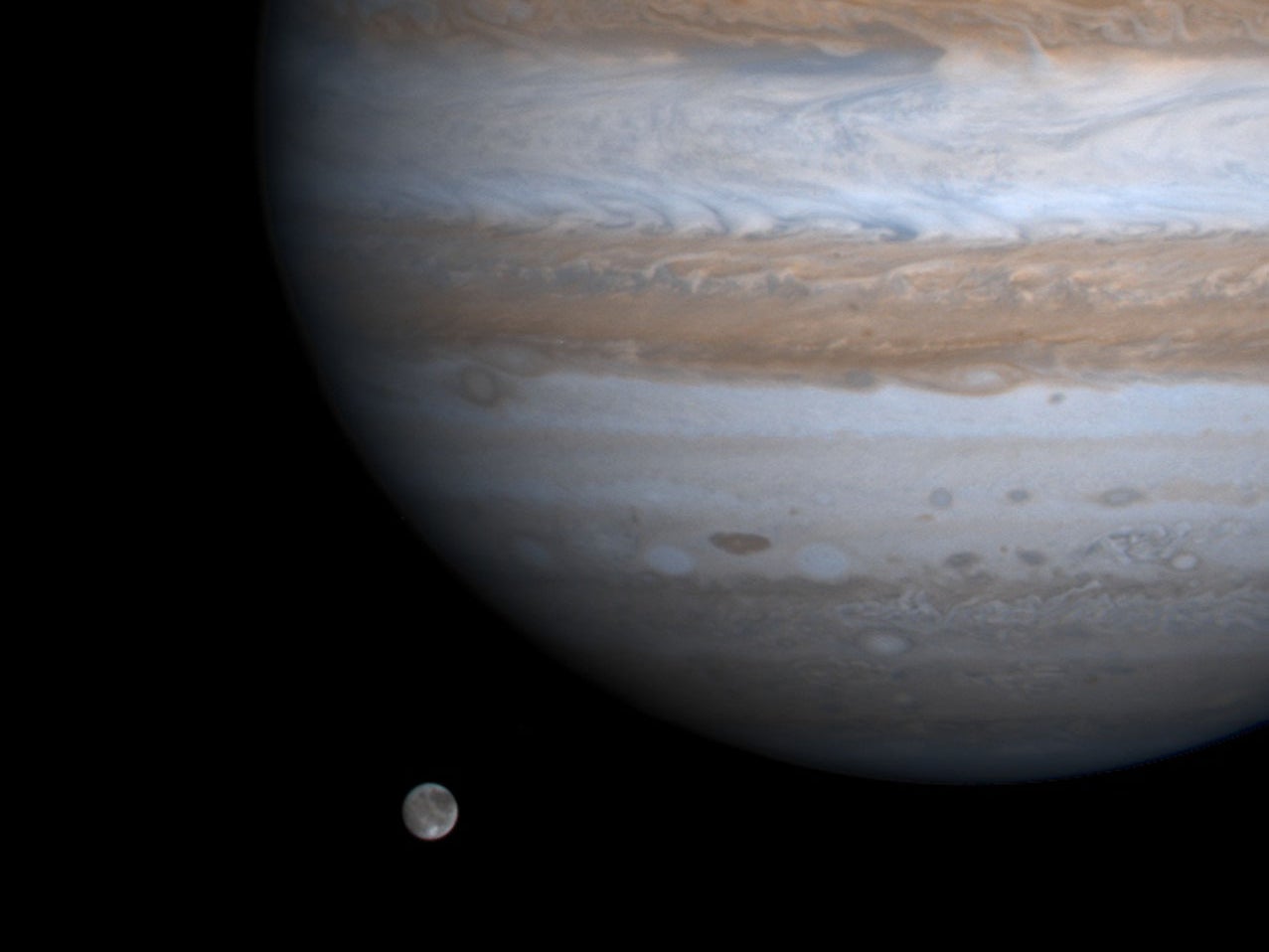Scientists solve the 40 year-old mystery behind Jupiter’s massive X-ray blasts
Every 27 minutes a new blast was sent out into the universe from the volcanos on Io - and astrophysicists finally understand why

For 40 years, scientists could not understand how Jupiter produced bursts of X-rays every few minutes; now, researchers from University College London believe they have the answer.
The X-rays are part of Jupiter’s aurora, visible bursts of light that occur when charged particles interact with the gas giant’s atmosphere – the same phenomena that creates the aurora borealis, better known as the northern lights, on Earth.
Jupiter’s spectacles, however, are vastly more powerful. They release hundreds of gigawatts of energy; one power station on Earth, by comparison, can produce a single gigawatt over a few days.
In a new study, researchers were able to observe Jupiter using Nasa’s Juno satellite, as well as X-ray measurements with the European Space Agency’s XMM-Newton observatory. Alongside the Chinese Academy of Sciences, the researchers found that these X-ray flares were triggered by periodic vibrations of Jupiter’s magnetic field lines.
These vibrations create waves of plasma – ionised gas, where particles are stripped of their electrons – which sent heavy particles along the magnetic lines until they collided with the planet’s atmosphere, releasing X-rays. This happens at both Jupiter’s north and south polls with astonishing regularity. Every 27 minutes a new blast is sent out into the universe, originating from the huge volcanoes on Jupiter’s moon, Io.
Jupiter’s magnetic field is 20,000 times stronger than the Earth’s and therefore its magnetosphere, or the area controlled by that field is extremely large.
“We have seen Jupiter producing X-ray aurora for four decades, but we didn’t know how this happened. We only knew they were produced when ions crashed into the planet’s atmosphere”, said Dr William Dunn, from UCL’s Mullard Space Science Laboratory.
“Now we know these ions are transported by plasma waves – an explanation that has not been proposed before, even though a similar process produces Earth’s own aurora. It could, therefore, be a universal phenomenon, present across many different environments in space.”
Now that this process has been identified, co-lead author Dr Zhonghua Yao from the Chinese Academy of Sciences in Beijing says, it is possible that it could happen on other planets such as Saturn, Uranus, and Neptune.
X-rays are usually produced by more powerful cosmic objects such as black holes and neutron stars – the collapsed core of a supergiant star, between 10 and 25 times greater than the mass of the sun – so it is surprising that planets are able to produce them.
“We can never visit black holes, as they are beyond space travel, but Jupiter is on our doorstep”, Professor Graziella Branduardi-Raymont of UCL’s Mullard Space Science Laboratory, said.
“With the arrival of the satellite Juno into Jupiter’s orbit, astronomers now have a fantastic opportunity to study an environment that produces X-rays up close.”
Subscribe to Independent Premium to bookmark this article
Want to bookmark your favourite articles and stories to read or reference later? Start your Independent Premium subscription today.

Join our commenting forum
Join thought-provoking conversations, follow other Independent readers and see their replies